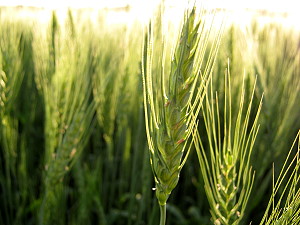 Crop Report Prepared by: Manitoba Agriculture, Food and Rural Initiatives GO Teams & Crops Knowledge Centre August 15, 2011 |
Crop Report Prepared by: Manitoba Agriculture, Food and Rural Initiatives GO Teams & Crops Knowledge Centre August 15, 2011 |
Northwest Region
Isolated thundershowers and widely scattered light rain showers occurred across most of the Northwest Region. Up to 25 mm of rain fell through Dauphin, Grandview and Ethelbert areas with lesser amounts of 5 to 10 mm in other areas. Localized hail was reported in the Sifton area.
Winter wheat harvest is underway, as is the perennial rye grass seed harvest with yields from 800 to 1200 pounds per acre.
Crop growth is generally good with all crops continuing to develop into advanced seed development and filling stages. Spring wheat is beginning to ripen and desiccation is being done. Early seeded canola fields are being swathed in all areas. Some lodging of heavy cereal crop stands through Swan River and Roblin is reported. In those areas which experienced early season seeding delays, there is variability in crop development due to heat stress and drying soils. Soil moisture is generally adequate but moving towards dry levels where little precipitation has occurred.
Canola fields are being monitored in the San Clara and Durban areas for bertha larvae and some spraying is reported. A few fields have been treated for diamondback moth larvae in the Dauphin and Gilbert Plains areas. Sclerotinia is also beginning to develop in some canola fields.
Second cut of forages is general across the region with good yields and quality being reported. Silage corn is growing rapidly in response to higher temperatures. Newly seeded forage grass seed, greenfeed and silage corn would benefit from some rain.
Pasture conditions are good where grazing had not been premature. The native hay harvest is continuing with average or above yield potentials on lands which are accessible and have not been flooded. Flood-impacted low lying or poorly drained native forage and pasture lands adjacent to Lake’s Manitoba, Winnipegosis and Dauphin are drying where water levels have receded. Forage production is much reduced due to invasion of cattails and other water–loving plant species.
